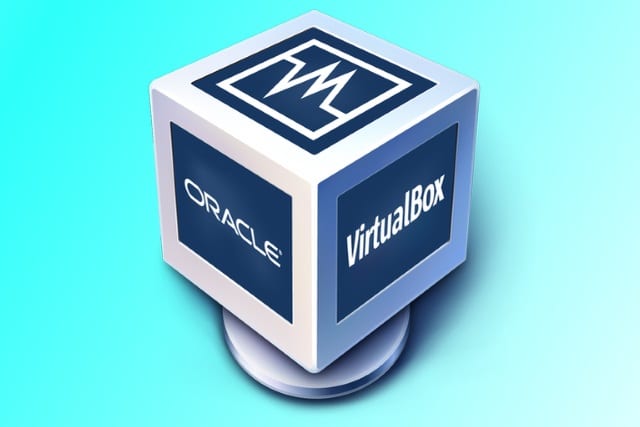Oracle releases VirtualBox 7.0.0 with full Windows 11 support

There are plenty of virtualization tools to choose from, but if for anyone looking for one that offers solid support for a wide range of host and guest operating systems, it's hard to go wrong with VirtualBox. Bringing support for Windows 11 -- something previously available in the beta builds -- Oracle has now released VirtualBox 7.0.0.
As has been the case in the past, VirtualBox 7.0.0 is available for Windows, Linux and macOS (as well as Oracle's own Solaris), but this release is about more than adding full Windows 11 support. There are also new options for cloud-based virtual machine, as well as improved security and much more.
See also:
- Microsoft confirms worrying slow file copying problem in Windows 11 2022 Update
- Microsoft releases Windows HDR Calibration app to help configure your monitor in Windows 11
- Microsoft says that gamers can boost performance by lowering Windows 11 security settings
On the security front, it is now possible to fully encrypt virtual machines. Oracle has made various changes and improvements to audio, such as switching to Vorbis, as well as introducing numerous updates to the user interface. There is a new utility that lets you monitor the performance and resource usage of guest OSes.
While the lengthy changelog is impressive, it is the likely fact that Windows 11 can now be installed without the need for hacks or workaround that will please the most users.
The VirtualBox development team shares details of the following major changes in version 7.0.0 of the software:
- Virtual machines can be fully encrypted now, including the VM config logs and saved states (CLI only for now)
- OCI: Cloud virtual machines can be added to Virtual Machine Manager and controlled as local VMs
- OCI: Cloud networks can now be configured via Network Manager tool same way as it is done for Host-only and NAT networks
- GUI: Added a new utility similar to "top" or "resource monitor" which lists performance statistics (CPU usage, RAM usage, disk I/O rate, etc.) of running guests
- GUI: Reworked the new vm wizard to integrate the unattended guest OS installation and to have a more streamlined work flow
- GUI: Added a new help viewer widget which enables the user manual to be navigated and searched
- GUI: Adding new notification center unifying most of running progresses and error reporting around the GUI
- GUI: Improved theme support on all platforms. Linux and macOS use native engine while for Windows host it is separately implemented.
- GUI: Large icon update.
- Audio recording: Now using Vorbis as the default audio format for WebM containers. Opus is no longer being used.
- Audio: Added "default" host driver type to make it possible to move VMs (appliances) between different platforms without the need of changing the audio driver explicitly. When the "default" driver is selected, the best audio backend option for a platform will be used. This is the default for newly created VMs.
- Guest Control: Implemented initial support for automatic updating of Guest Additions for Linux guests
- Guest Control: Implemented ability to wait for and/or reboot the guest when updating Guest Additions via VBoxManage
- VBoxManage: Added Guest Control "waitrunlevel" sub-command to make it possible to wait for a guest to reach a certain run level
- Windows hosts: Added experimental support of running autostarted VMs in session 0, to allow running VMS even when a usser is not being logged in (disabled by default, please consult the manual)
- macOS host: Dropped all kernel extensions. VirtualBox relies fully on the hypervisor and vmnet frameworks provided by Apple now. At the moment the implementation lacks "Internal Networking" functionality. This will be provided at a later date.
- macOS host: Providing a Developer Preview package for systems with an Apple silicon CPU. This is unsupported work in progress, and is known to have very modest performance.
- Linux Guest Additions: Reworked guest screen re-size functionality, added basic integration with some of guest Desktop Environments
- Devices: Implemented new 3D support based on DirectX 11 (and DXVK on non Windows hosts)
- Devices: Added virtual IOMMU devices (Intel and AMD variant)
- Devices: Added virtual TPM 1.2 and 2.0 devices
- Devices: The EHCI and XHCI USB controller devices are now part of the open source base package
- EFI: Added support for Secure Boot
- Debugging: Added experimental support for guest debugging through GDB and highly experimental support for guest debugging through KD/WinDbg
In addition to these notable new features and options, VirtualBox 7.0.0 also includes numerous fixes and improvements:
- OCI: Cloud networking functionality is enhanced for local VMs, now local VMs could be connected to cloud networking
- GUI: Improved behavior of the virtual machine list and various VM related tools in case multiple items are selected
- GUI: On available platforms, added a new option to disable the host's screensaver
- GUI: Reworked global preferences, machine settings and the wizards to improve stability and usability
- GUI: Improving mouse handling in multi-monitor case on X11 platform
- GUI: Medium enumeration engine was reworked to improve performance
- GUI: NAT Network stuff was moved from global preferences to global Network Manager tool
- GUI: Extension Pack Manager was moved from global preferences to global tools
- GUI: Improved overall accessibility
- GUI: Migrating to recent Qt versions
You can download VirtualBox 7.0.0 here.

Pingback: Oracle releases VirtualBox 7.0.0 with full Home windows 11 assist - Tech Disk
Pingback: Links 11/10/2022: VirtualBox 7.0 Released and Half of PCs Cannot Run Vista 11 | Techrights
Pingback: Oracle releases VirtualBox 7.0.0 with full Windows 11 support – BetaNews - 7th IT